How to Get Rid of Age Spots in 5 Easy Steps
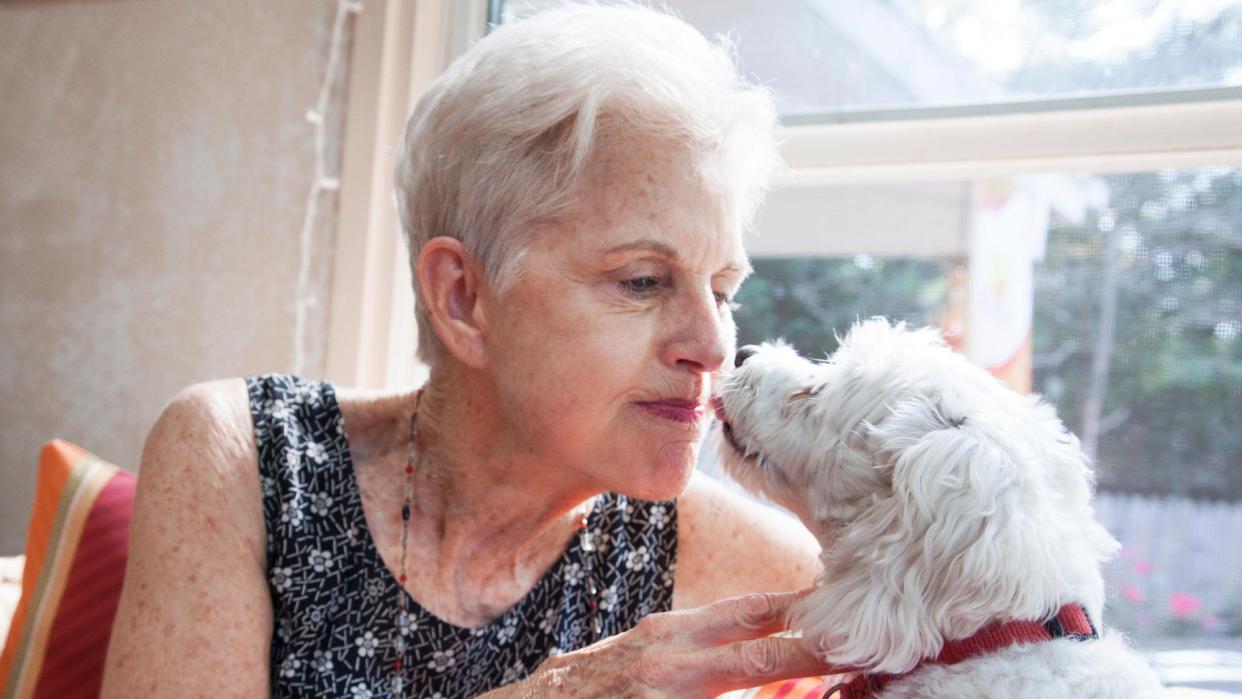
Getty Images
Ever glance at your hand, arm, or face and find that you have a new, rogue dark spot that seemingly popped up overnight? Welcome to the club!
Despite our best efforts to keep ourselves slathered in SPF, by the time our 30s and 40s roll around, the cumulative damage from the sun's UV rays from daily exposure — not to mention every sunny beach vacation (remember those?) — over our lifetime has racked up, causing spots of discoloration all over our skin.
These age spots, also called sun spots or liver spots, can creep up anywhere, but tend to collect on areas of the body that have been exposed to consistent sun exposure — think: face, hands, shoulders — and can be a nightmare to cover up, especially if there's a big old brown spot smack dab on your cheek. But it's not all doom and gloom.
There are stellar skincare products you can use at home to reduce discoloration and uneven skin tone. And seriously stubborn spots can be zapped into oblivion by a few (painless) heavy duty treatments from your dermatologist.
To keep our complexion in check, we tapped board-certified dermatologists and assistant clinical dermatology professors, Dr. Oma Agbai at UC Davis, and Dr. Morgan Rabach, at the Icahn School of Medicine at Mt. Sinai Hospital, to find out how to reverse sun damage and banish dark spots forever.
Step 1: Sunscreen, Sunscreen, Sunscreen
You knew this was coming: Prevention is your biggest ally in the fight against premature skin discoloration.
"One common exacerbating factor for these disorders of hyperpigmentation is UV exposure," explains Dr. Agbai. "Being out in the sun can darken the spots and make them more difficult to fade with treatment."
Protect your skin from developing new spots — and to stop the current spots from darkening — by wearing a broad-spectrum tinted sunscreen every single day to shield skin from both UV radiation and visible light, like indoor lighting and screens, recommends Dr. Agbai. And she doesn't mince words: "strict protection from the sun is vital."
To streamline your skincare routine, try the multitasking anti-aging sunscreen, Dark Spot Sun Defense by Dr. Dennis Gross Skincare, that will not only duke it out with UVA/UVB rays, but the peptides, vitamins C and E, and hyaluronic acid will also get to work on dark spots and uneven skin tone.
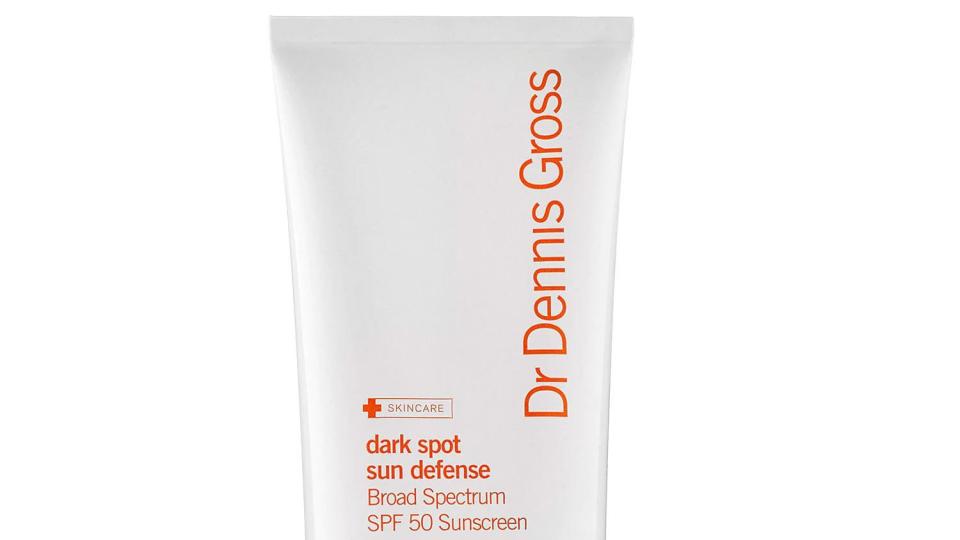
Courtesy
To shop: $42; sephora.com
Seriously, no days off here.
Step 2: Book a Skin Check Exam
"A mixture of genetics and sun exposure causes age spots," says Dr. Rabach, who also notes that they can appear in a range of pigments, from tan all the way to dark brown. Because age spots are new growths, they "always should be looked at by a board certified dermatologist to confirm what they are" as well as to rule out dangerous spots, like melanoma.
A dermatologist will diagnose age spots via a visual exam and a handheld tool called a dermatoscope to look at pigment under the skin.
"Rarely is a biopsy needed for confirmation," assures Dr. Rabach, but also notes that a spot changing shape or color can be an early form of melanoma and should be looked at ASAP.
VIDEO: Ask Dr. Pimple Popper
Step 3: Start Early with Vitamin C and Retinol
Vitamin C is essentially a do-it-all antioxidant that not only gives skin an overall brighter appearance, but also stimulates collagen production and defends against environmental stressors, including the sun and free radicals, to mitigate sun damage.
"People with darker skin are less likely to develop age spots but are more likely to develop different "spots" of hyperpigmentation," says Dr. Agbai. "There are a variety of cosmeceuticals aimed at evening out skin tone, which are considered safe for most people. Vitamin C serums may be helpful for achieving a more even skin tone and topical retinoids such as Differin Gel can be helpful as a gentle peeling agent."
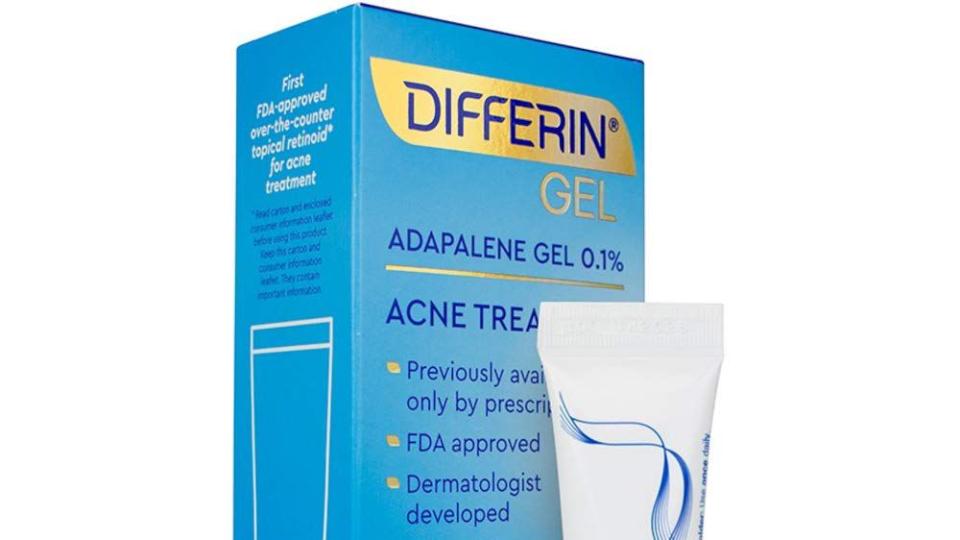
Courtesy
To shop: $15; target.com
Cult classic C E Ferulic serum from SkinCeuticals is chock-full of pure vitamins C and E to tone down hyperpigmentation, plus antioxidant-rich ferulic acid to neutralize free radicals and replenish skin lipids. Another super potent option is Tatcha's Violet-C Brightening Serum 20% Vitamin C + 10% AHA by combining a high concentration (20%!) of two types of vitamin C to smooth uneven tone, boosted by a blend of seven mild fruit alpha-hydroxy acids, including apple, grapefruit and lime, for maximum absorption.
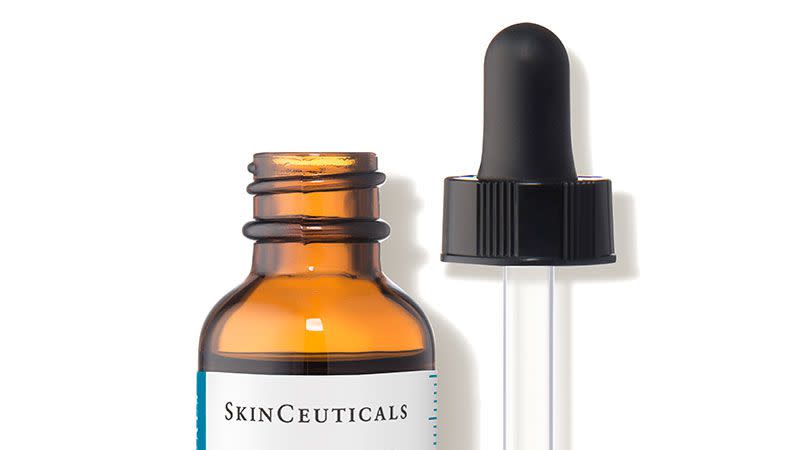
Courtesy
To shop: $169; dermstore.com
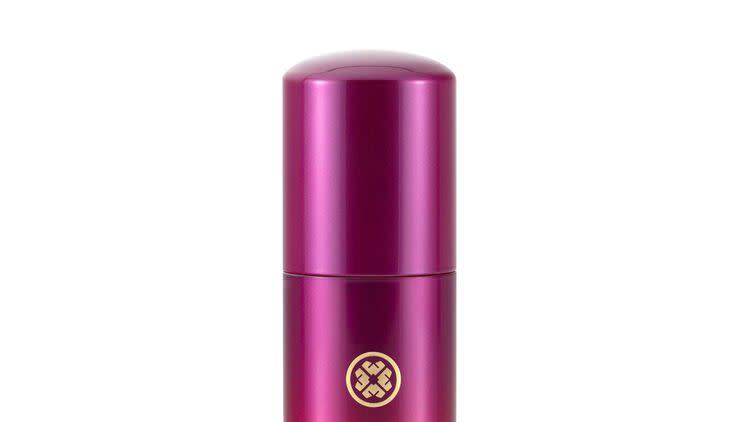
Courtesy
To shop: $88; sephora.com
Step 4: Brighten With a Supercharged Serum
Skin brightening serums, harnessing the power of hydroquinone, can be helpful to diminish the appearance of age spots by essentially bleaching the brown spot, causing its color to fade over time.
"Hydroquinone has been used as an over-the-counter lightening agent, which can be safe and effective when used cautiously," warns Dr. Agbai. "Be careful to avoid lightening creams containing topical steroids, as this can cause harmful changes in the skin when used over a long period of time."
Lightening products contain powerful ingredients — hydroquinone is banned in Europe, but FDA-approved up to 2% — and they should be properly vetted before incorporating into a skincare routine. According to Dr. Agbai, some skin lightening creams sold outside of the U.S. contain toxic ingredients, including mercury, making it critically important to take the time to read the list of ingredients before choosing a skin lightening agent.
Start your search by looking for well-known brands, which are usually backed with extensive clinical trials confirming safety, like Differin or Proactiv. Differin's Dark Spot Correcting Serum is made with 2% hydroquinone but balanced with antioxidant Sea Buckthorn Berry oil to calm skin, making it a powerful, yet gentle, formula.

Courtesy
To shop: $24; target.com
Alternatively, swap the hydroquinone for tranexamic acid, the latest hero acid to brighten and battle the toughest spots. We like Dr. Brandt's mighty trio of color-correcting acids in the Dark Spots No More lightweight serum and SkinMedica's Lytera 2.0 Pigment Correcting Serum, although on the pricier side, promises visible results at two weeks and serious payoff at 12 weeks.
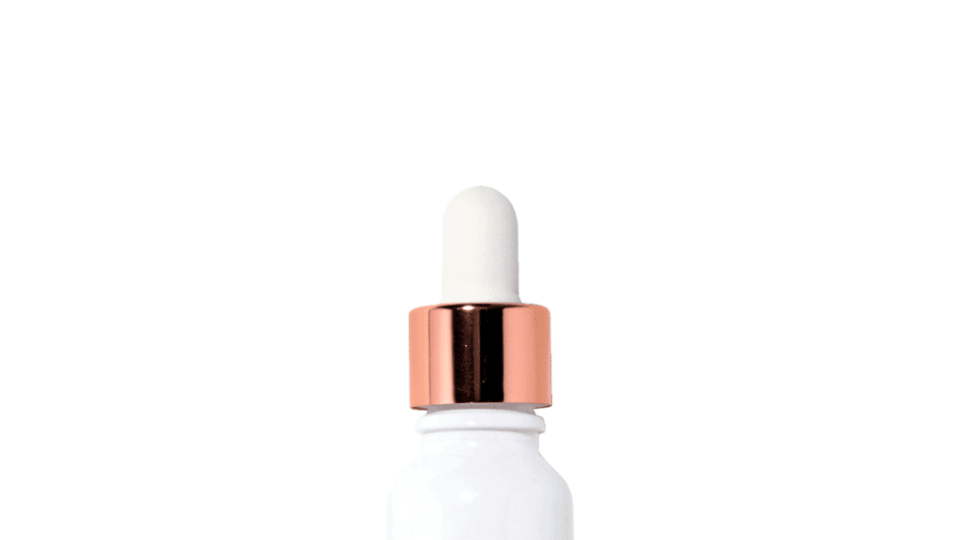
Courtesy
To shop: $68; sephora.com
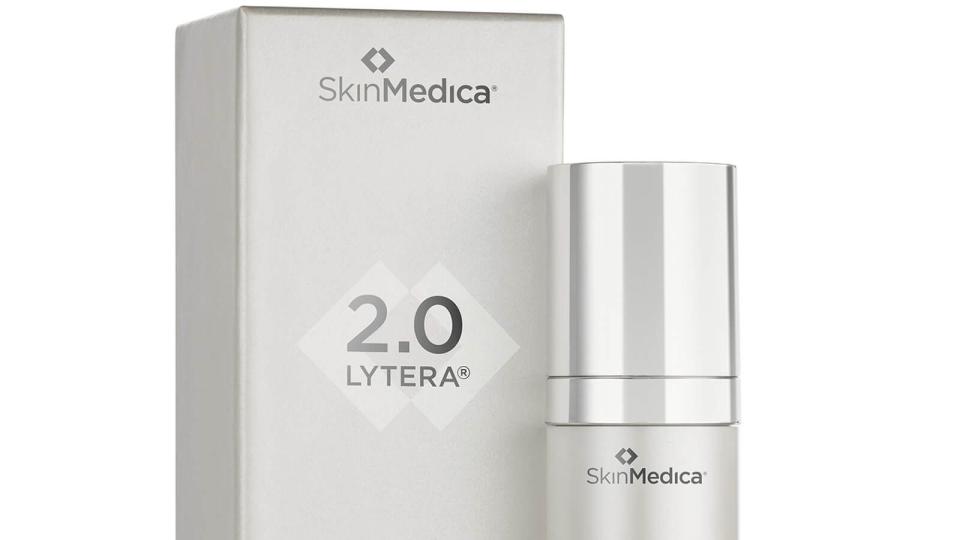
Courtesy
To shop: $131; dermstore.com
But still, Agbai pleads, "Make sure to openly discuss cosmeceuticals you are using with your board-certified dermatologist to make sure they are safe."
Step 5: See a Dermatologist for Stubborn Spots
Deeper or darker age spots may not respond to OTC topical formulations, in which case, graduating to an in-office treatment, like an exfoliating chemical peel, a laser or an intense pulsed light (IPL), is the next step to remove discoloration and even out skin tone. Determining which in-office treatment is best for you is largely dependent on skin tone.
"One area where treatments can differ between people with dark and fair skin are in laser procedures that treat hyperpigmentation," explains Dr. Agbai. "Certain resurfacing lasers, such as the CO2 laser, for example, can work well for people with fair skin, but can worsen hyperpigmentation in people with darker skin tones."
When it comes to lasers, Clear + Brilliant is a true wizard at making advanced sun-damaged dark spots, discoloration and photo damage disappear in the face, neck, chest, and body.
Addressing discoloration and redness, IPL uses light energy to target skin dark masses, making it safe for fair skin tones, as the color variation between skin and age spot is strong, but IPL can be a risky option for darker skin tones, as the light could mistakenly target more than just the pigment in the unwanted area.
In-office chemical peels are strong and effective alternatives to lasers and IPL treatments, and when performed under the careful eye of a dermatologist or plastic surgeon, they can treat most skin tones.
People with fair skin tones respond well to trichloroacetic acid (TCA) or glycolic acid-based peels that chemically exfoliate the outer layers of skin to stimulate collagen production and cell turnover, allowing for a new layer of skin with lighter-appearing spots to appear. However, in darker skin, these peels can cause "disfiguring hyperpigmentation, called post-inflammatory hyperpigmentation," says Dr. Agbai.
For Black people and people of color, she recommends a careful combination of prescription topicals, like Tri-Luma, in tandem with salicylic acid 30% chemical peels every few weeks to help fade hyperpigmentation.
But above all, Black people and people of color need to beware of a too-strong chemical peel that penetrates too deeply into the skin, cautions Dr. Agbai, as it can quite literally burn your skin off and worsen hyperpigmentation.
"People of color should be very careful with chemical peels and peeling agents used at home," she says. "The key is to discuss any plans for using an at-home chemical peel or other treatment with a board-certified dermatologist who is familiar with skin of color."
Those with lighter skin tones have better luck with at-home chemical peels, especially those that are gentle enough to use daily, like Dr. Dennis Gross Alpha Beta Universal Daily Peel, or the even milder Daily Peel for Sensitive Skin.
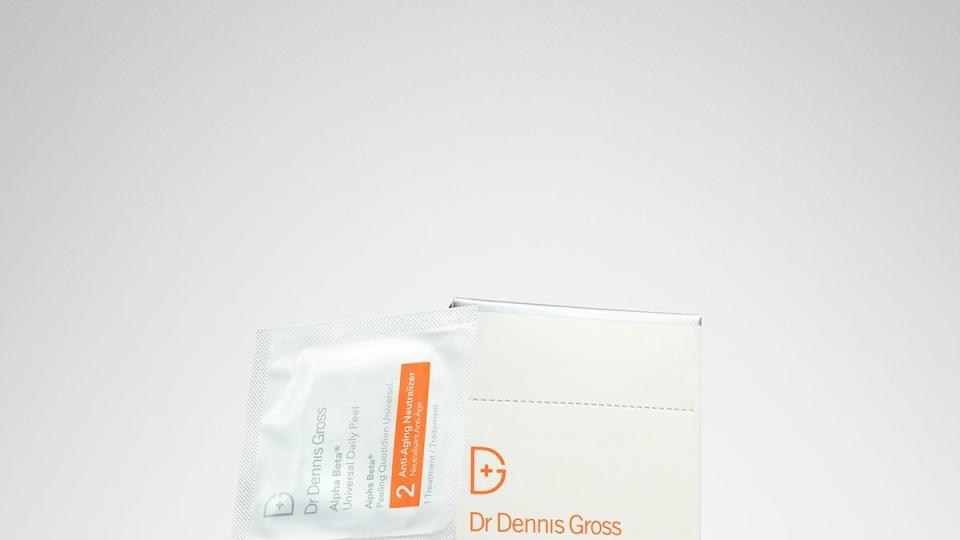
Courtesy
To shop: $88; sephora.com
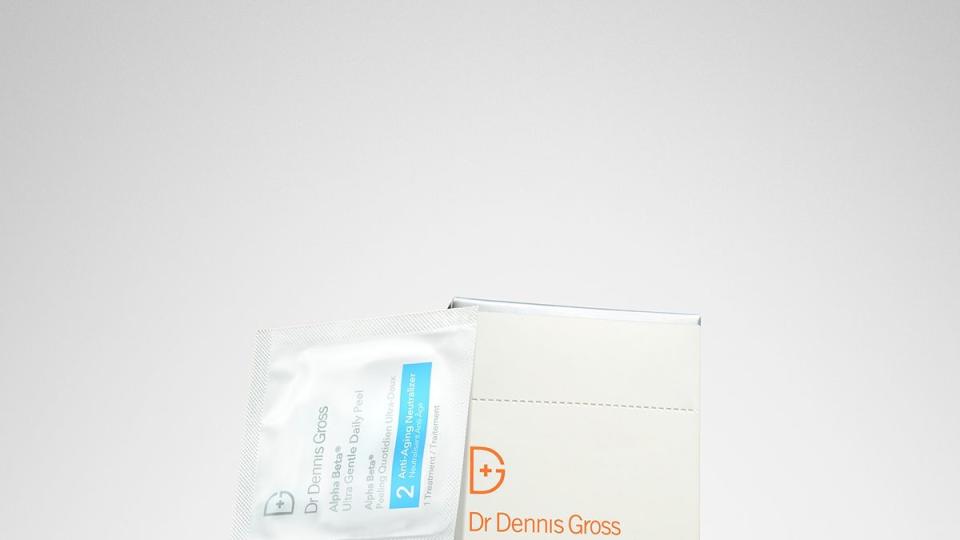
Courtesy
To shop: $17; sephora.com

